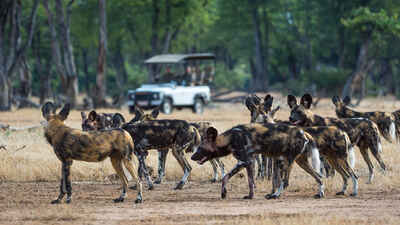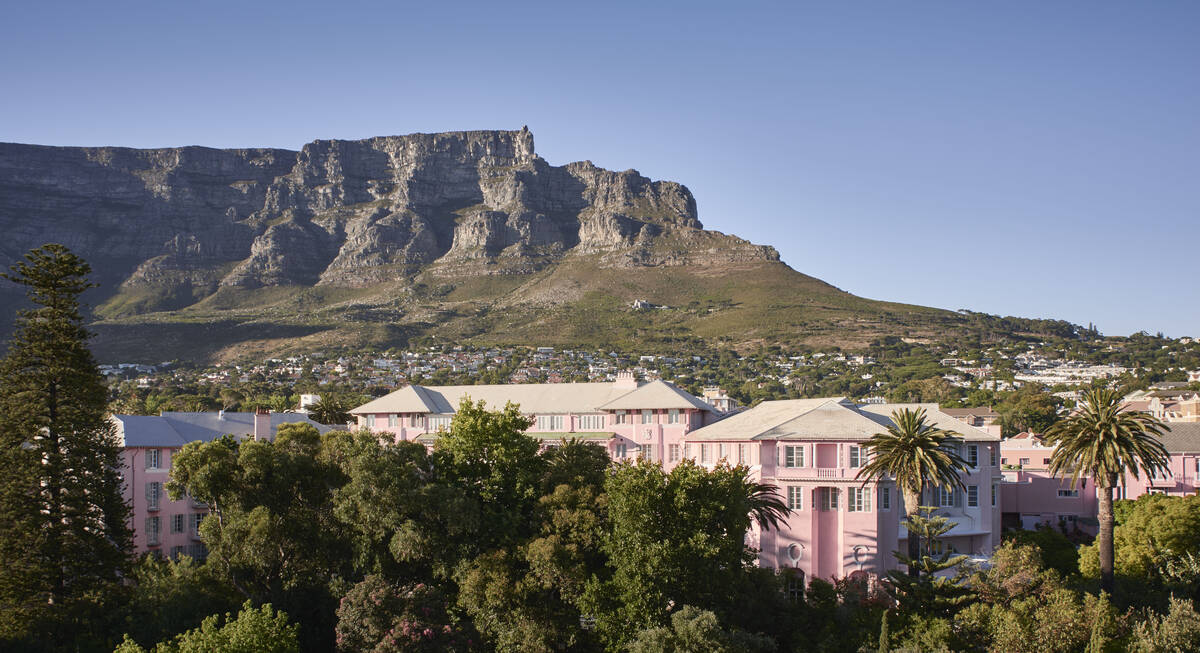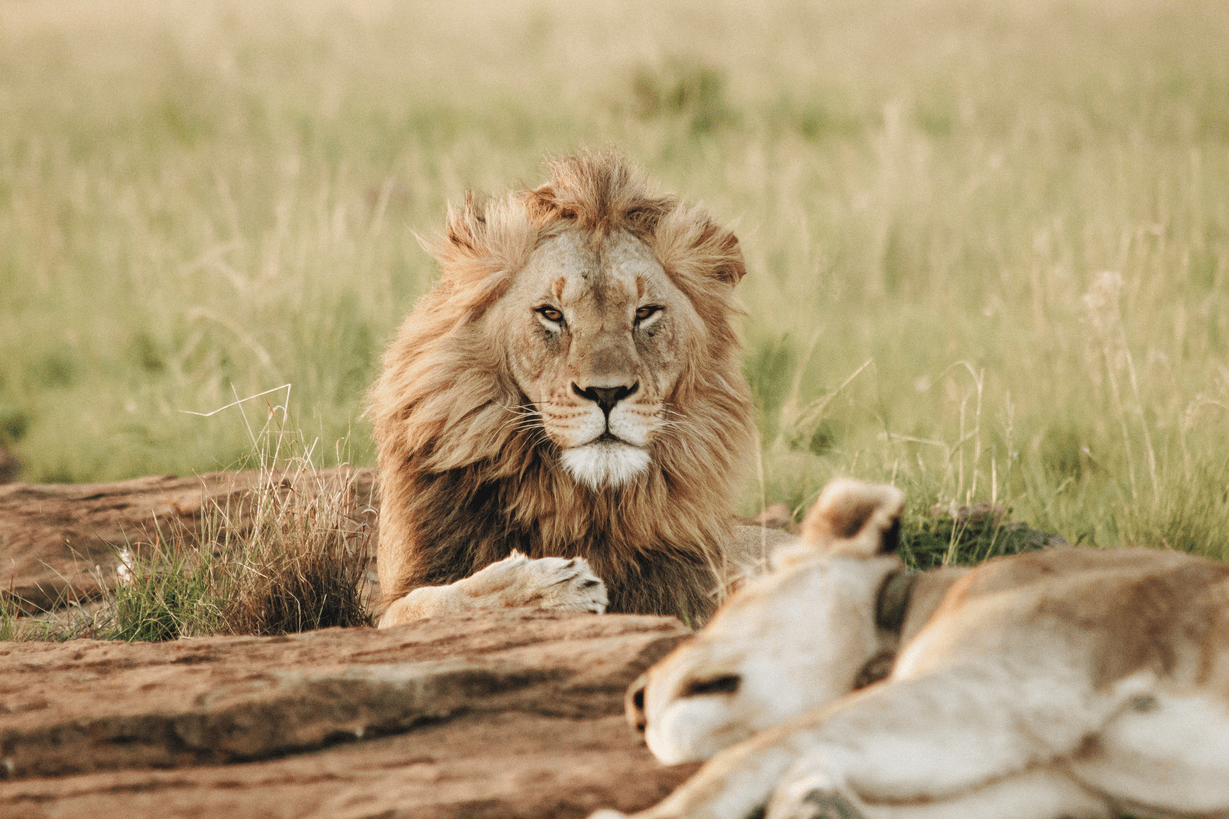Where to see wild dogs in South Africa
African wild dogs are among the continent’s most compelling animals. Much misunderstood, these rare, tie-dyed canids are amazingly efficient hunters with a fascinating social life.
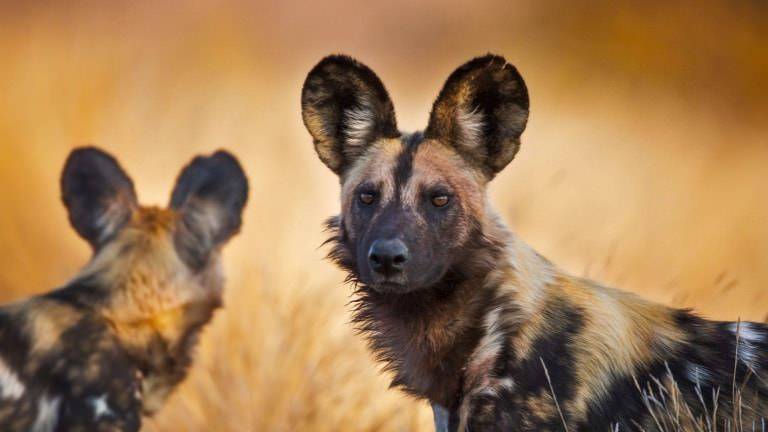
Quick facts about Wild dog
| Scientific name: | Lycaon pictus | Habitat: | Savannah & woodland |
|---|---|---|---|
| IUCN status: | Endangered | Adult weight: | 20–36kg |
South Africa is home to around 600 African wild dogs. These fall into three broad categories. First, there are 300–350 in the Greater Kruger National Park, which has remained their last stronghold after being eradicated elsewhere and is one of Africa’s most important populations. Then there is the ‘metapopulation’ – a scattered collection of smaller, fenced reserves across the north and east, where wild dogs have been reintroduced in recent decades and are now intensively protected and monitored. These include Hluhluwe-iMfolozi Game Reserve in KwaZulu-Natal (introduced 1980) and Madikwe Game Reserve in Northwest Province (introduced 1994). Finally, there is a small free-roaming population outside protected areas, largely in Limpopo Province in the far north.
1.9–5.2kg
Daily meat consumed
±60%
Kill success rate
10
Average litter size
8–10 weeks
Pups abandon den
The top camps for seeing wild dog in South Africa
Based on 2 reports by our travellers since Jun 2018, visitors at these camps in South Africa have the best chances of sighting wild dog.
Best chances to see
Good chances to see
Some sightings
No sightings yet
Best areas to see wild dogs in South Africa
African wild dogs wander widely and so are often hard to track down. If you find them, stay with them: they are typically unconcerned and you may witness a hunt.
South Africa: wild dog hot spots
You stand a decent chance of spotting wild dogs in Kruger National Park, especially in the hilly south-west, where lions are less abundant. But the park is vast, the bush dense and you must be in the right place at the right time. Your odds may improve in Sabi Sands and the other private concessions that make up the Greater Kruger along the western border. In KwaZulu-Natal, Hluhluwe-iMfolozi Game Reserve has around ten packs, and has seeded smaller populations on nearby reserves, including uMkhuzi, Tembe and Somkhanda. Perhaps South Africa’s most reliable wild dog viewing can today be enjoyed in the more arid lands to the north-west, notably in Madikwe Game Reserve which today has at least three packs, well-established and habituated to vehicles, and Tswalu Kalahari, where 12 pups were born in 2023.
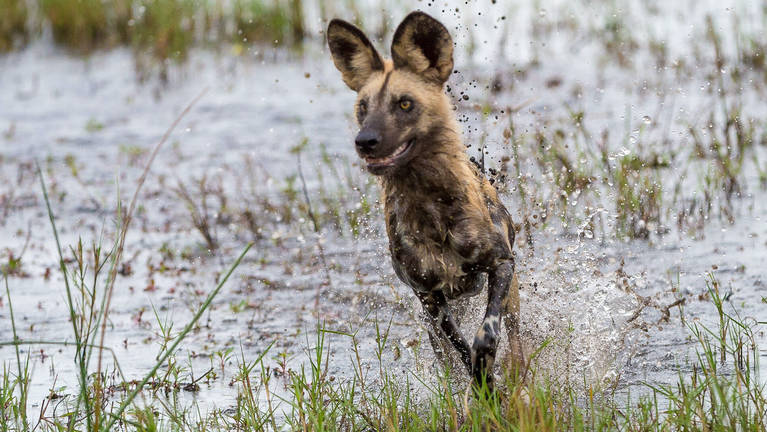
Our best South Africa holidays for wild dog sightings
Based on our travellers' reports, these ideas for South Africa safaris are likely to give the best wild dog sightings
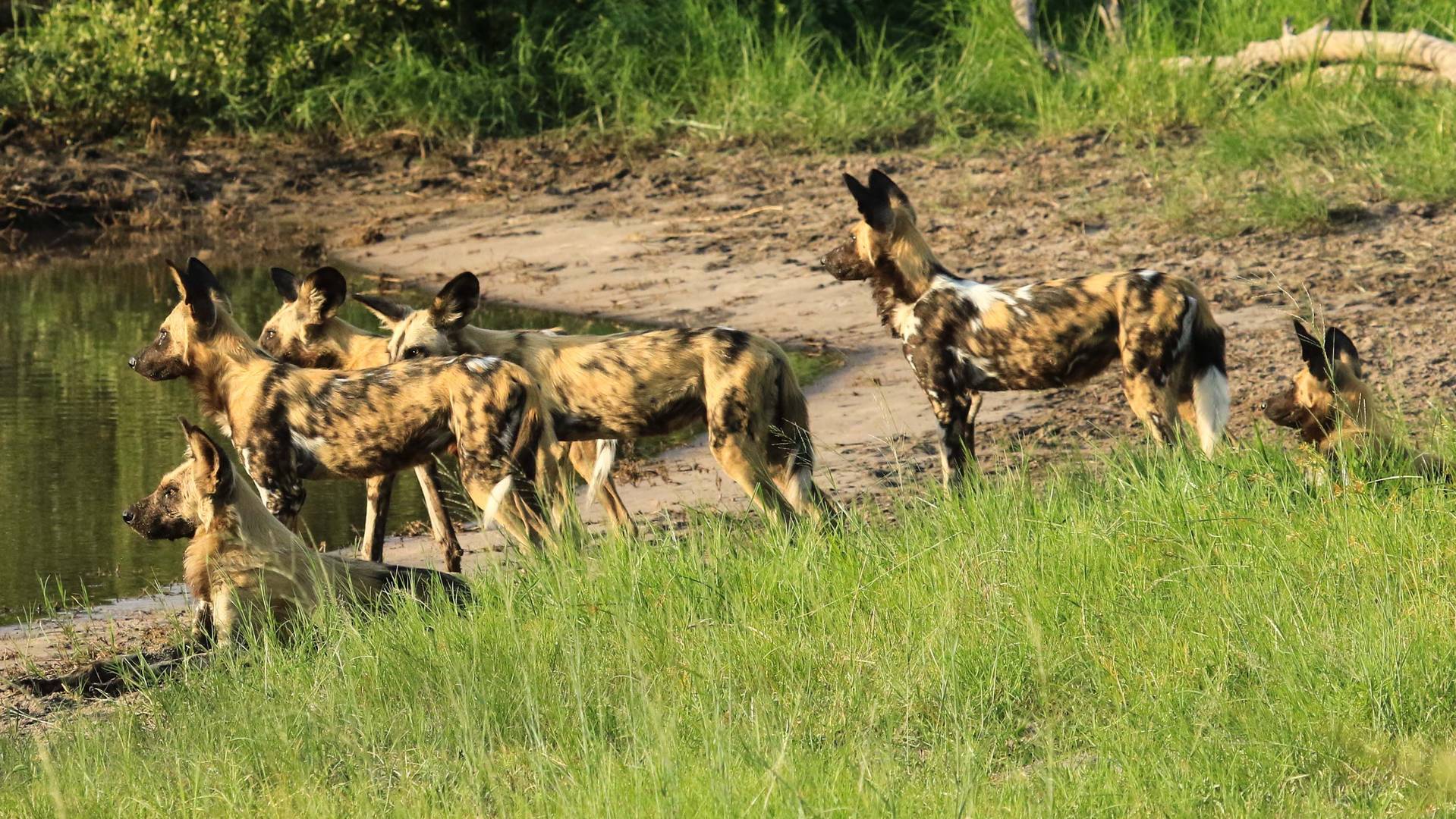
More information about wild dog in our other destinations
Click here for detailed information about wild dog in other countries, including the places for sighting wild dog.
